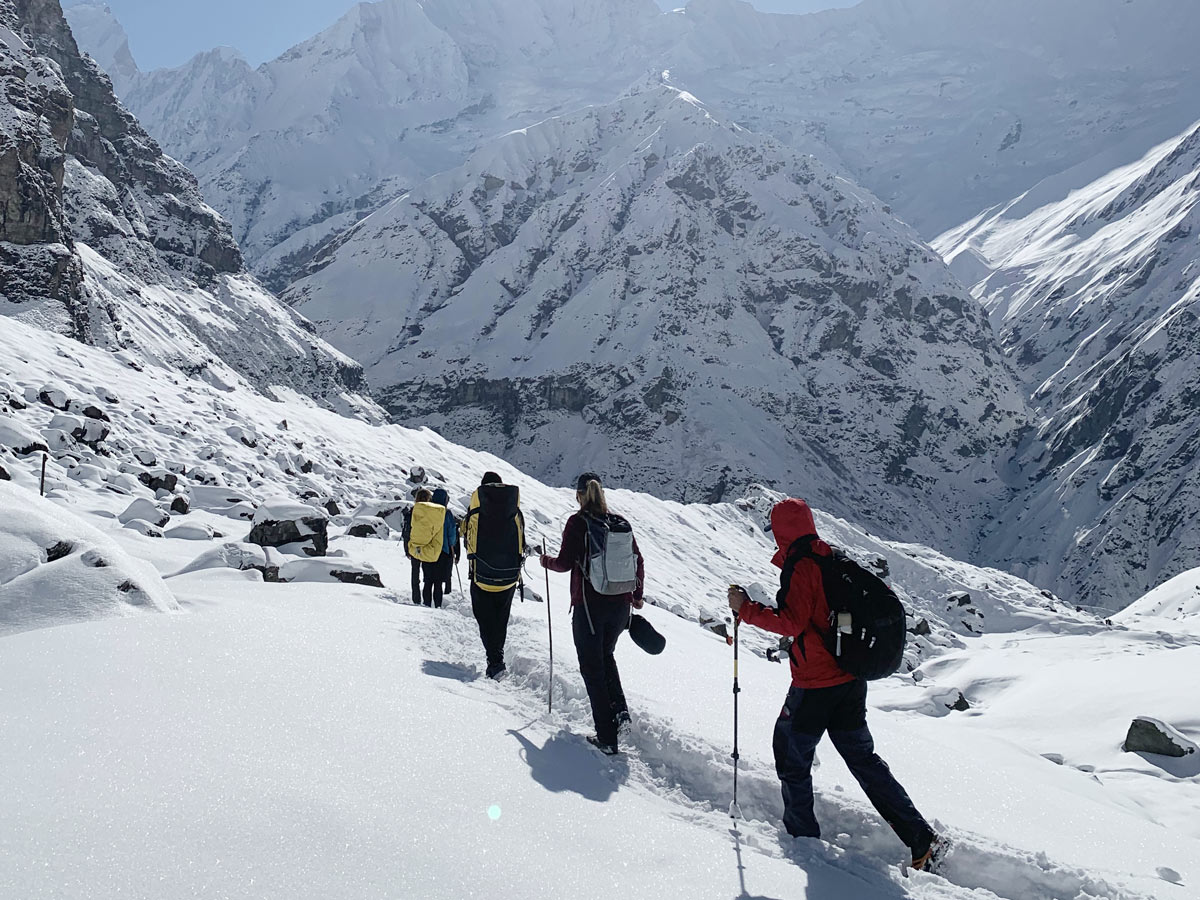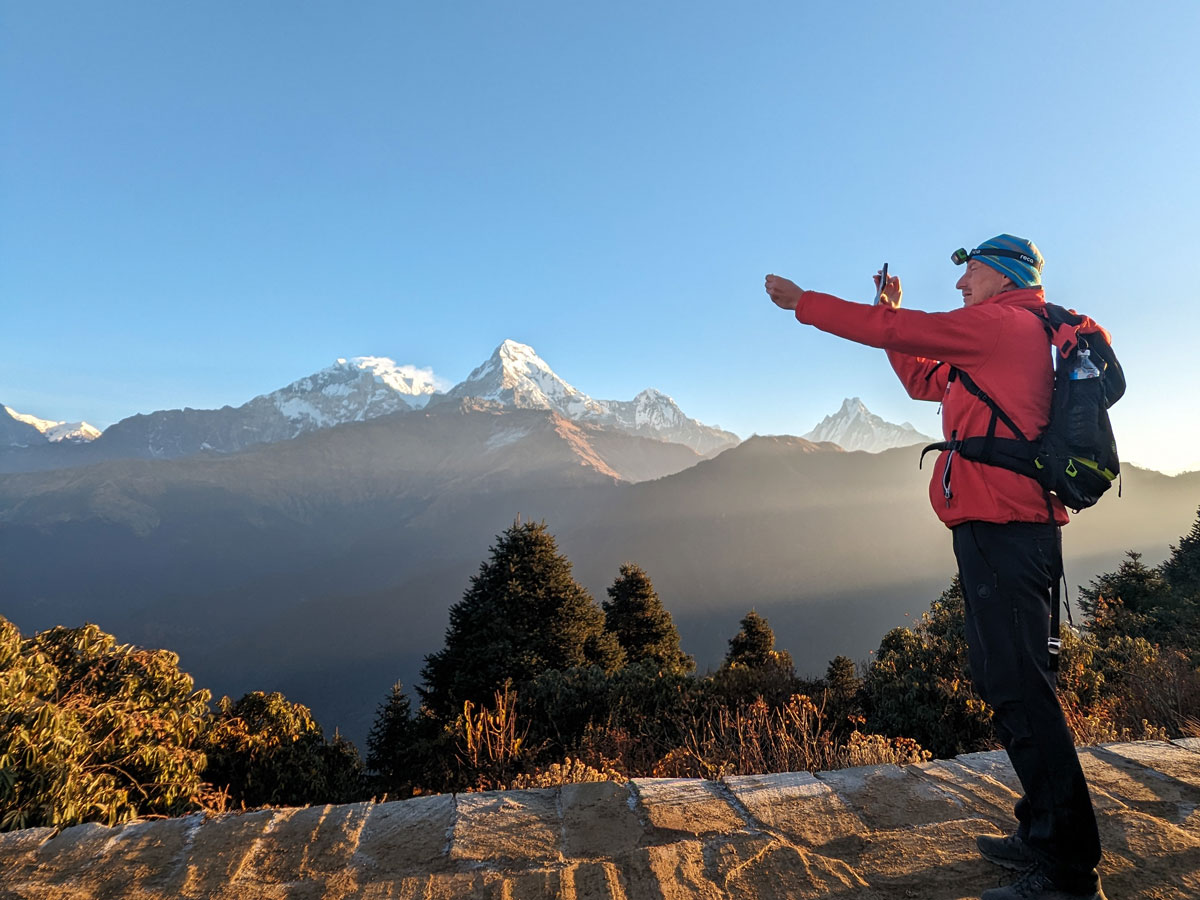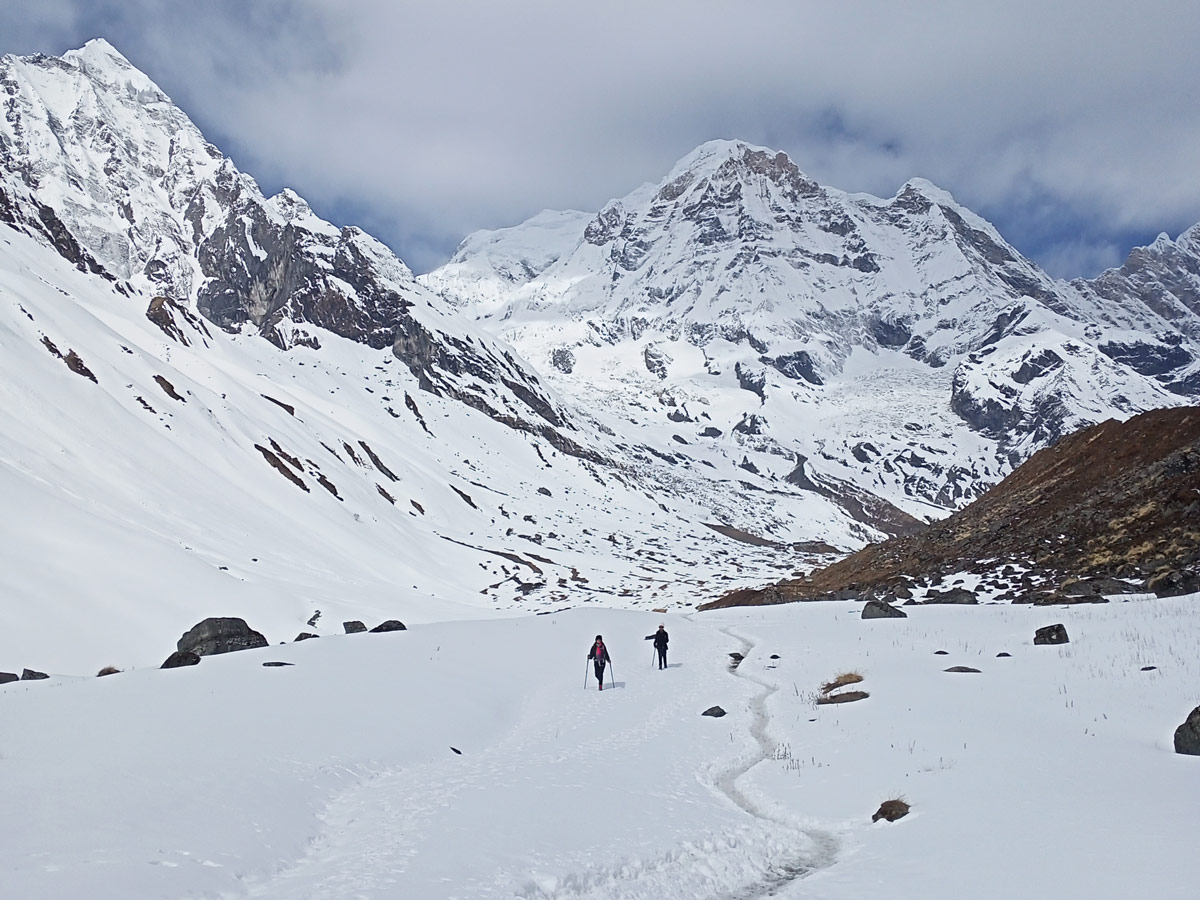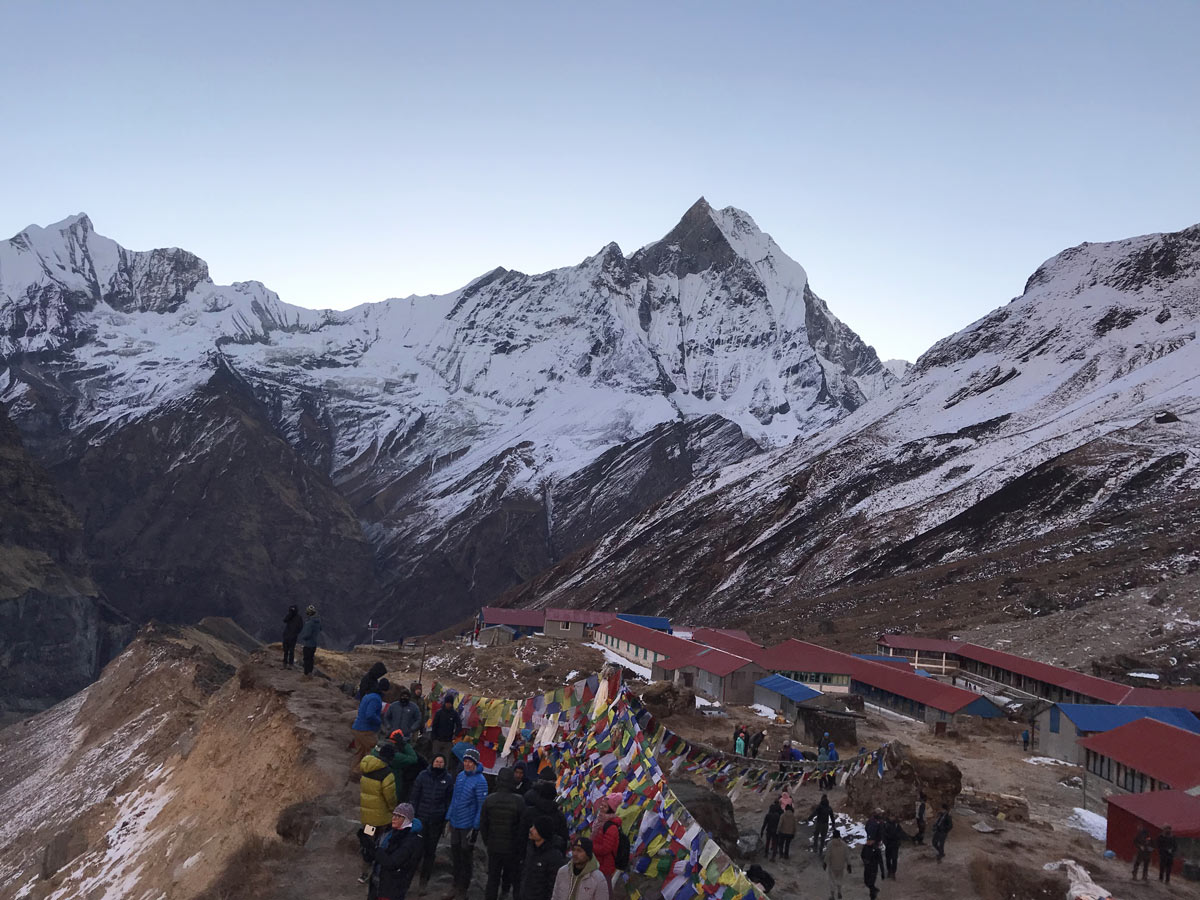The Annapurna Base Camp trek is a visual treat and is one of the most popular trekking routes in the world, all thanks to the world class views that it provides. It is a life-changing experience set against the heavenly backdrop of the Himalayas.
As you step into the world of impeccable natural splendor amidst the towering peaks and the enriching culture, the ABC trek also unfolds certain challenges which require adequate preparation.
The most important aspect of preparing for this odyssey in the stunning Annapurna region is packing. Proper packing doesn’t just boil down to comfort, it also ensures safety and convenience providing a fulfilling trekking experience.
While it is important to pack all the required gear for the trek, it is also important to limit the list to the right ones to avoid overpacking which can add burden to your journey.
To avoid the dilemma and overwhelm caused by the wide range of options, we have curated a checklist for you to refer to while packing your gear. For experienced trekkers and novice alike, this blog is helpful to everyone.
Feel free to make subtle changes and customize the checklist depending on your comfort and the season that you are opting for trekking.
Understand Your ABC Journey
The Annapurna Base Camp trek takes you along different climatic conditions as you go from the lower altitude at Pokhara and ascend towards the zenith of the trek at the Annapurna Base Camp. This trek is an undulating journey and features lots of highs and lows.
Covering an altitude difference of around 3,230 meters (10,595 feet), this trek takes you in the remote villages for around 9-11 days (about 1 and a half weeks) covering a distance of approximately 110 kilometers (68 miles) based on the standard itinerary.
Brace yourself as you will come across seemingly never-ending stone stairs while you are on the trek. The rugged terrain also features lots of steep ascents and descents contributing to the difficulty of the ABC trek.
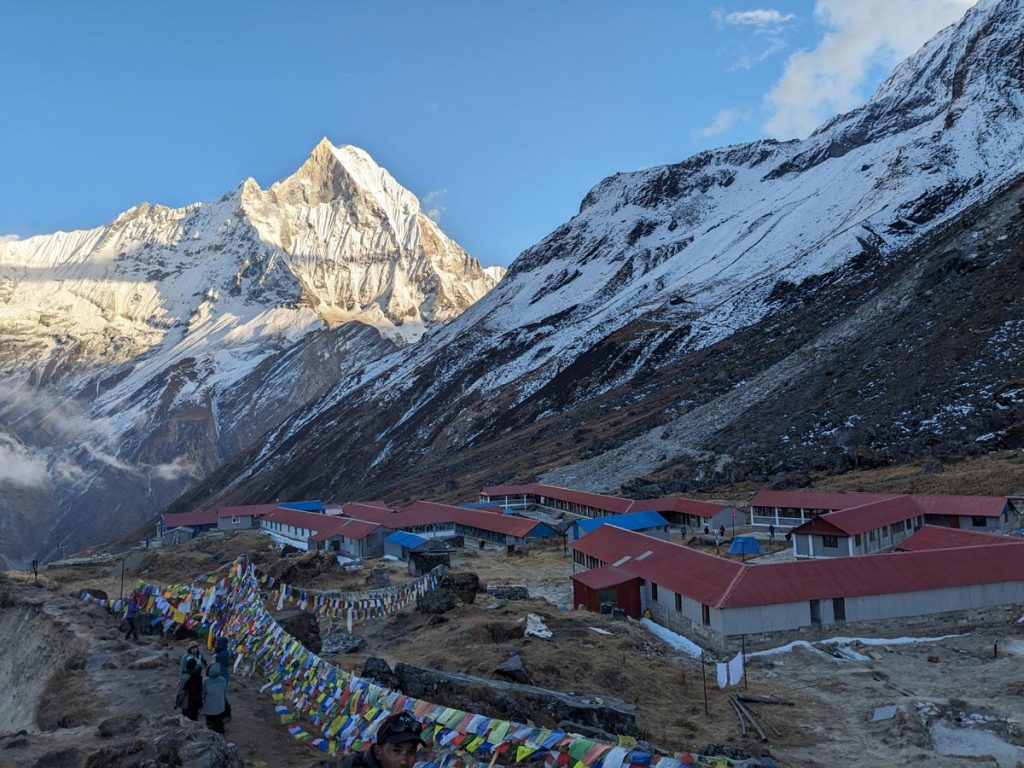
To tackle all these challenges in the places where you lack your familiar comfort, you need to have a comprehensive packing list ranging from clothing to shoes to health supplies and many more things.
Your gear must be adaptive given the unpredictable nature of the trek as well as durable and lightweight. Versatility and sustainability are added advantages. However, making a checklist while keeping all of this in mind can be daunting and confusing.
Therefore, refer to the list of items given below to keep you from overpacking. These items can sustain you throughout the trekking adventure while also making your journey more comfortable and hassle-free.
Trekking Essentials
Backpack and Daypack
A spacious and comfortable backpack that is packed with proper organization and is lightweight is one the most important things to have during the ABC trek as this is where all your gear and other essentials goes in.
Pack your backpack well and refer to online videos for further guidance. With Ace the Himalaya, you will receive a free 80-liter duffel bag to store all your belongings not required for the day and it will be carried by the porter.
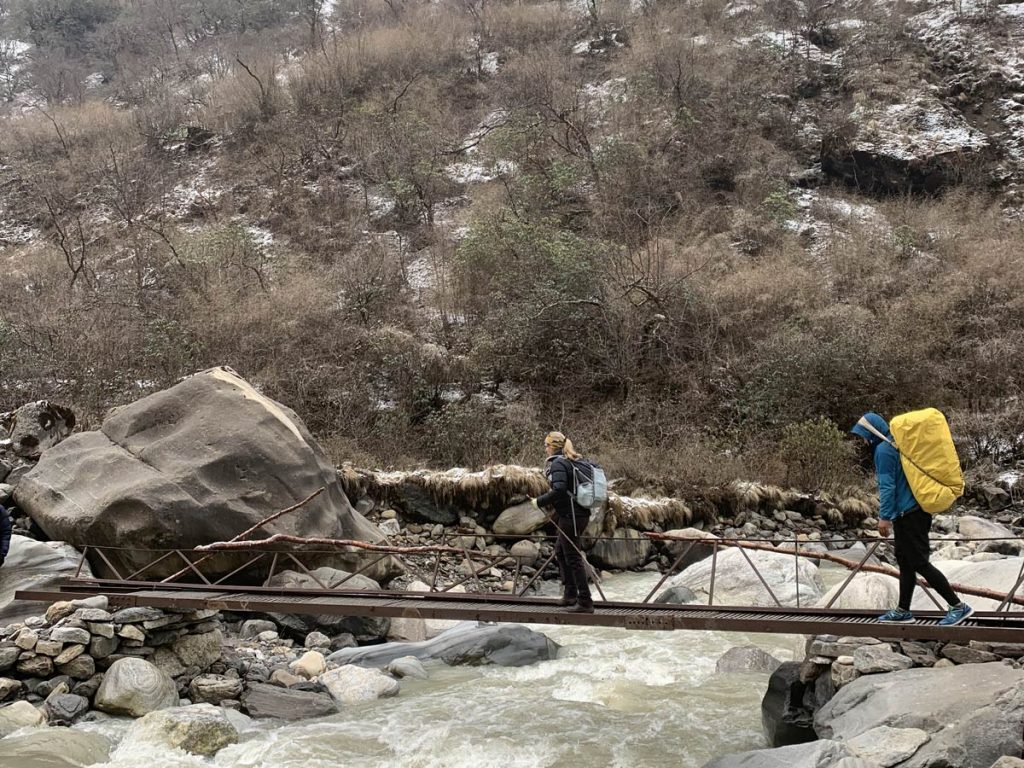
Also, carry a daypack, preferably 30-50L where you can store all the essentials that you might need throughout the day like cash, documents, water bottle, snacks, camera, etc. Do not forget to carry a rain cover as it is an asset against sudden downpours along the trek.
Sleeping Gear
Although you will be provided with comfortable and warm beds at the teahouses, it is still advisable to carry your own sleeping bags as it ensures proper hygiene throughout the trek.
Consider the comfort rating and the temperature range of the sleeping bag and purchase a four-season sleeping bag to keep you warm amidst the freezing temperatures of the chilly Annapurna region.
To provide an additional layer of warmth and hygiene in the adverse conditions of snowfall, make sure to carry a sleeping bag liner. You can purchase sleeping gear during the trek up to Chhomrong.
However, renting the sleeping bag for an additional charge can be a much more convenient and cost-effective option, especially if you are not a frequent trekker.
Puffy Down Jacket
A puffy down jacket is the key to tackling the beyond freezing temperatures amidst the towering peaks in the higher segments of the Annapurna Base Camp trek like the Annapurna Sanctuary.
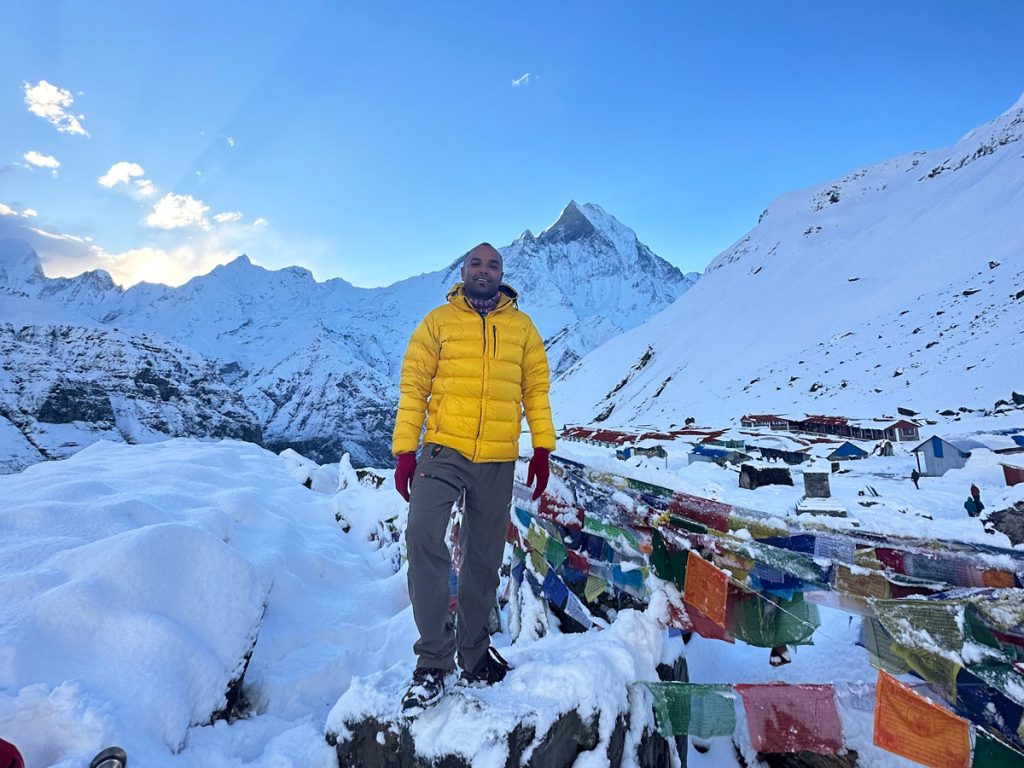
These jackets provide you with an insulating layer and trap your body heat, not letting it escape. This helps you stay warm in the extreme temperature of the trek. Buy a jacket from a reliable brand like Montbell, Mountain Hardwear, or a reliable replacement.
However, for non-frequent trekkers, agencies provide you with an option of renting these jackets too at an additional cost.
Essential Clothing: Layer Like a Pro
Covering a significant gap of 3,230 meters from Pokhara to the Annapurna Base Camp, the ABC is a journey featuring numerous and extreme fluctuation in temperature. The weather along the trek is unpredictable and you can expect sudden downpours and snowfall at any part of the trek.
Therefore, it is important to adapt to the temperatures in a hassle-free way to ensure convenience throughout the trek. Layering is the key to hacking the fluctuating temperatures as it gives you the freedom to add or remove layers conveniently.
Headwear
Sun hat or Cap
You will be walking in the scorching sun for an average of 5-7 hours every day on the ABC trek. Therefore, wearing a sun hat or a cap allows you the warmth of a sun kissed experience while protecting you from the harmful rays of the sun.
It also prevents any kind of physical issues like sunburn or heat strokes and shields your eyes from the glare letting you enjoy the heavenly view of the region. At Ace the Himalaya, we provide the trekkers with a free baseball cap during the pre-trip meeting.
Knitted hat
The Annapurna region gets extremely cold, especially during mornings and evenings and on the days of snowfall. A knitted hat or a beanie becomes invaluable at those times to tackle the freezing temperatures.
Scarf or Neck Gaiter
Leaving less skin exposed, a scarf of neck gaiter also prevents you from getting sunburns while adding an insulating layer of warmth to your body.
Torso
Base Layer
A base layer acts as insulation while being in direct contact with your body. Pack base layers made up of technical fabric like merino wool and synthetics which provide functions like breathability, moisture-wicking, odor resistant, and are thermal too.
Quick drying materials give an added advantage during the extreme conditions of the trek. Pack both short and long-sleeved shirts to wear according to the temperature of the segment.
Waterproof and Windproof Shell
Top up your base layer with an additional waterproof and windproof layer to help maintain the temperature during adverse climate on the trek.
Pack a hardshell jacket as they are made for the purpose of trekking to protect you from all adversities like snow, strong winds, as well as heavy rainfall.
Fleece Jacket
Carrying a fleece jacket or a pullover is highly advisable as they are designed to trap in the air. While the base layers produce warmth in your body, the fleece jacket helps to lock in that warmth, all thanks to its insulating layer.
Lower Body
Hiking Pants
Working in sync with the torso clothing, thermal leggings or leggings made up of technical fabric should be mandatory in your packing list. Once that is sorted, pack a good set of hiking pants.
Stretchable pants add comfort to the long hours of walking and breathable and quick-drying material ensures convenience throughout the trek.
Hiking Shorts
If you are walking along the warmer segments of the trek, hiking pants might be a little uncomfortable and cause issues like heat stroke. To prevent that, pack in hiking shorts to ensure proper regulation of air.
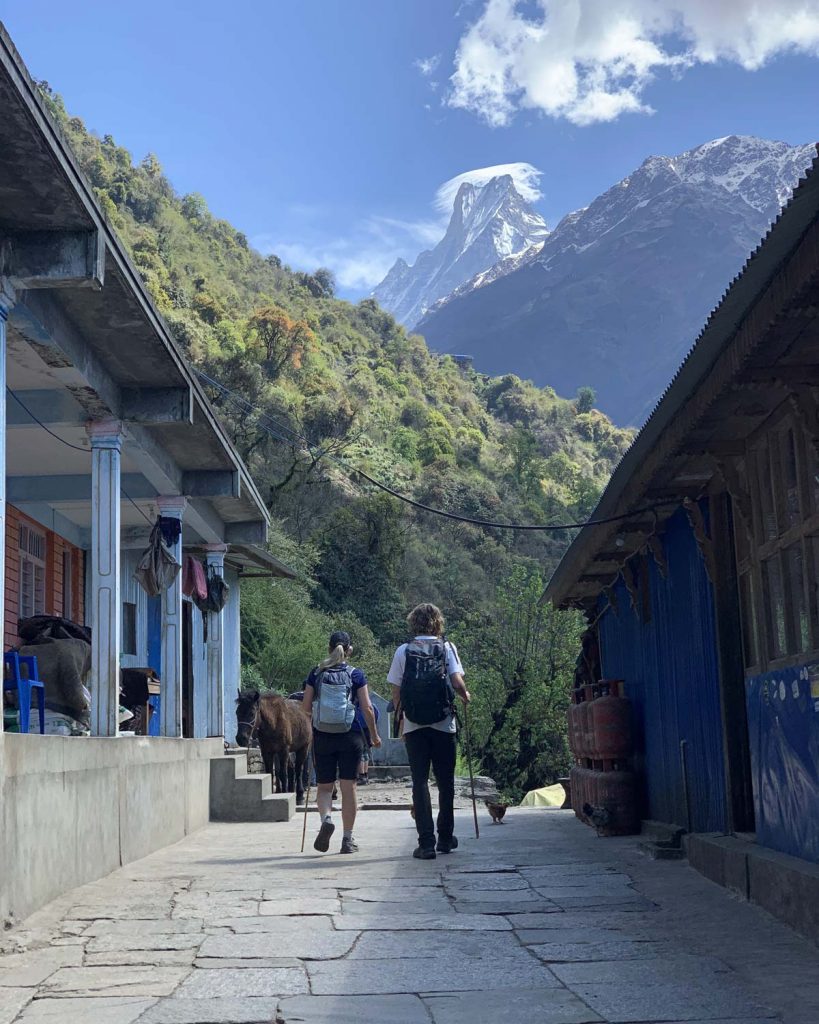
One valuable piece of advice is to pack convertible pants instead of going for pants and shorts separately as it is a convenient, time saving, and space saving alternative.
Waterproof and Windproof Shell Pants
Maintaining consistency with the torso, pack in shell pants as they protect you from insects, snow, wind, rainfall, and any kind of scratches from the thick undergrowth on the trail.
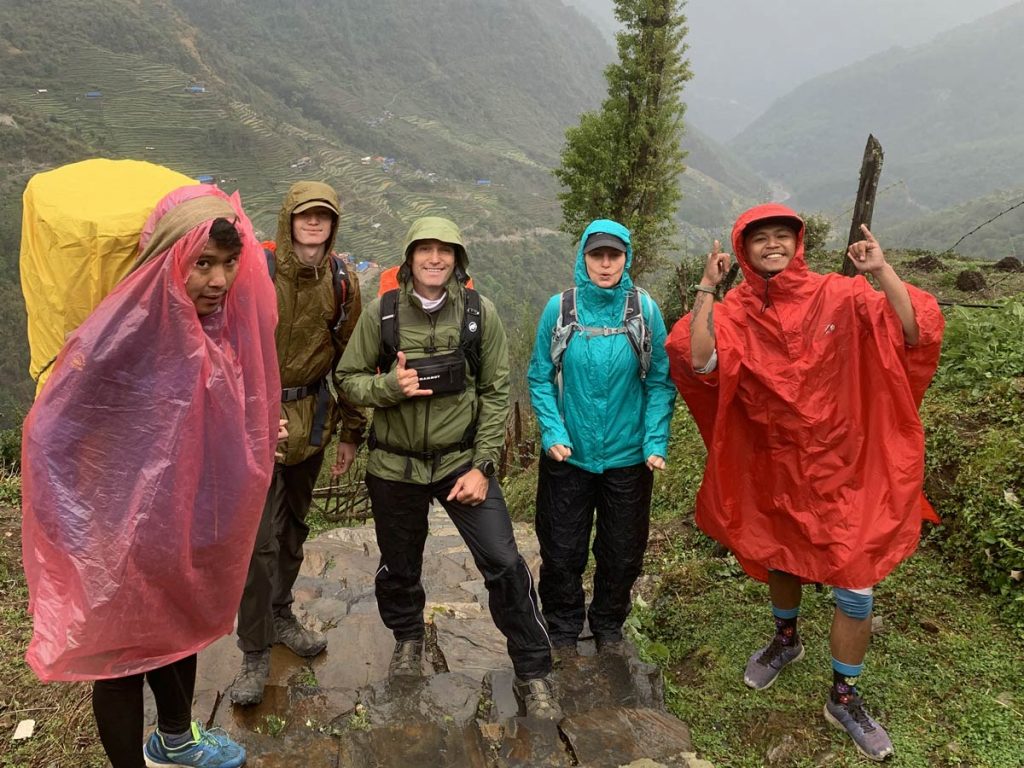
Comfortable Pants
While you are at teahouses, give your body a break from the trekking attire. Pack comfortable pants or trousers so that your body can relax.
Undergarments
When it comes to undergarments, you know the best pick for yourself. Pack enough undergarments and some spares to last throughout the trek as you might not be getting options for laundry or shops to buy new ones. Keep these tips in mind:
- Opt for technical fabric and quick drying underwear
- Carry an extra bag to store the used undergarments until you have access to laundry
- Sports bras are best for women for the long walking hours
- Carry comfortable and thermal sleeping clothes and pajamas
Footwear
Hiking Boots
The ABC trek will involve long hours of walking every day on challenging terrains and steep ascents and descents and uncountable stairs. Therefore, it is important that you invest in durable and comfortable trekking boots with a good grip.
Pack the ones that are well worn or if you are buying new ones, make sure to break them in well before coming for the trek to avoid blisters, hot patches, and sores. Make sure that your boots are sturdy, waterproof, and provide ample ankle support.
Liner Socks
Although optional, liner socks provide you more comfort with moisture management and the technical fabric also helps to prevent blisters. Wear it under your hiking socks for additional warmth.
Hiking Socks
Make sure to pair your boots with good quality hiking socks that provide you with extra cushioning and support during the long and strenuous everyday walks. They also help to prevent blisters and pain in your feet.
Woolen Socks
At higher elevations on the ABC trek, especially during winters, the temperatures can go below freezing point. In that case, hiking socks might not be enough for shielding your feet from the cold. So, pack a good pair of woolen socks to prevent your feet from swelling up or getting frost nips.
Casual Shoes
Pack lighter and comfortable shoes to give your feet a break from the hiking boots when you are in the teahouses or are exploring the villages along the ABC trail.
Ice Cleats
While hiking shoes have a good grip, it is advisable to pack in micro spikes or ice cleats for a more comfortable walk on the snow-covered trails of the Annapurna Base Camp trek, especially during winters.
Gaiter
Gaiters can be a valuable addition to our packing list as they cover the lower part of your legs as well as your boots and shield them from the dust, debris, snow, water, and dense undergrowth as you walk through the forests.
Hand Protection
As the exposed area of your body like your hands is comparatively more vulnerable to the cold temperature, it is crucial that you protect them. Keeping your hands unprotected can lead to frost nips or frost bites and even swollen hands and fingers due to cold.
Add these items to your packing list for a journey with comprehensive protection.
Liner Gloves
A pair of liner gloves serve many purposes like wicking away your sweat, providing additional insulation, breathability, and quick drying properties. Opt for lightweight gloves made up of technical fabric so that you can wear it as base layer on colder days.
Shell Gloves
Layering shell gloves over the insulated ones helps to provide an additional layer of protection and warmth, especially on wet and windy days. Go for the waterproof ones to shield you against the moisture even during snowfall.
Health, Hygiene and Nutrition
First Aid Kit
Make sure to carry your health essentials and emergency supplies for basic illness as well as minor injuries. Stock your first aid kit with general supplies and prescribed medications, if any. Refer to the checklist below:
- Painkiller
- A broad-spectrum antibiotic
- Cough syrup
- Antipyretics
- Bismuth subsalicylate for indigestion or diarrhea
- 125 mg or 250 mg Acetazolamide tablets for altitude sickness (Consult your doctor)
- Band aids, gauze, tape, blister plaster
- Antibiotic ointment
- Crepe bandages
- Prescribed medications, if any
Sun Protection
As you are on the ABC trek, the increase in altitude will also increase the intensity of the rays of the sun as you will be walking closer to the sun. It exposes you to issues like sunburn and UV damage.
Therefore, sunscreen should be an indispensable item that you must include in your packing list. Choosing a broad-spectrum high SPF sunscreen is better as it shields you against UVA and UVB rays alike.
While skin protection is crucial, lip protection is equally important as all that sunlight can cause chapping and burning of your lips. Therefore, carry lip balm with SPF to shield your lips from damage.
Picking a trusted brand is better than experimenting with new brands while on the trek.
Mosquito Repellant Cream
You never know what kind of insects you might encounter while on the remote trails of the ABC region. Therefore, a mosquito repellant cream or insect repellant cream comes in handy to protect you from any unwanted diseases during the trek.
Personal Hygiene
While on the ABC trek, you will not have access to your familiar comforts such as hot shower. Therefore, it is important that you carry some supplies to maintain hygiene throughout the trek.
- Toiletries (Preferably biodegradable) – Soap, Toothbrush, Toothpaste
- Toilet Paper
- Wet Wipes – Normal and Antiseptic
- Hand Sanitizer
- Quick drying towel
Women’s Hygiene
As the trail for ABC trek takes you to some of the remote corners of Nepal, you might not always be able to purchase sanitary items. So, make sure to pack enough sanitary products lasting for the duration of the trek. Opting for environment friendly products like menstrual cup or reusable pads is highly recommended.
Snacks
You will be exposed to the mouthwatering Nepali cuisine throughout the trek. However, packing nutrition rich snacks like energy bars or nuts is advisable to avoid palate fatigue and provide you with the much-needed surge of energy in between the long walks.
Calorie rich snacks along with rehydration salts are the key to ensure electrolyte balance and avoid altitude sickness.
Other Must-Haves
Apart from the general gear and clothing, you must ensure to pack the things listed below so that you have a hassle-free and comfortable journey. Make sure you don’t forget any of these items as the list is curated by keeping in mind the unpredictability of the trek.
- Passport
- Airline Tickets (Please leave a copy at our office in Kathmandu. This can be useful if there is a change in the date of the flight)
- Reusable water bottle
- Hydration bladder
- Extra copies of passport-size photos
- Water purification tablets or small filters
- Pillowcase
- Waterproof/dry bags for carrying important documents and money
- Rain covers/Bag covers
Beyond the Basics
Trekking Poles
Although trekking poles are optional, carrying one for the Annapurna Base camp trek can be invaluable. They provide support and most importantly shock absorption helping you with the steep descents on the stone stairs specific to the ABC trek.
A trekking pole on the ABC trek helps you find your balance for proper footing and reduces the knee jarring impact along the trail.
Sunglasses
As you traverse amidst the scorching sun in the Annapurna region, it is crucial that you protect your eyes from the harmful rays of the sun. So, remember to carry a good pair of sunglasses, preferably polarized, to protect your eyes from the UV rays, dust, debris, as well as the glare of snow.
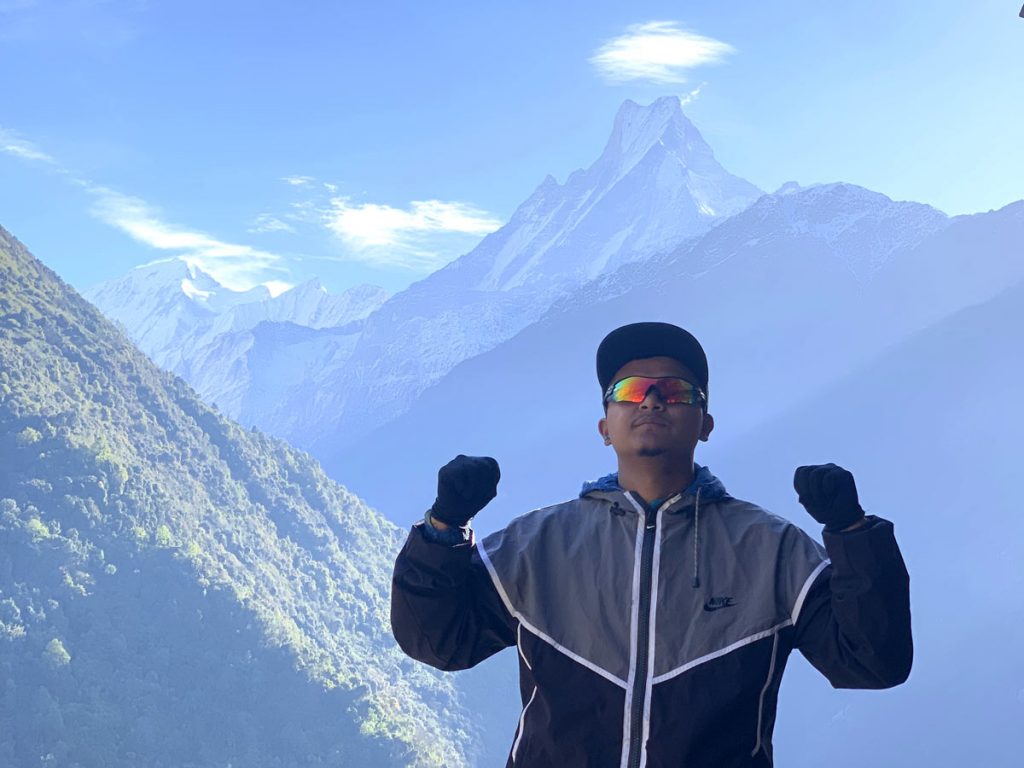
You can always ditch the stylish shades and opt for the more functional option- convertible glasses.
Headlamp
A headlamp with spare batteries, preferably having a red-light mode, can be an asset during the trek as you might be starting early or finishing late on some days. On segments on the ABC trek like the hike to Poon Hill, the headlamp can be very helpful.
It allows you to navigate the dense forest on the trail while being handsfree and the red-light mode further enhances your vision without straining your eyes.
Optional Items
While certain items are not compulsory to have in your backpack, they can enhance your trekking experience and make it more convenient. Have a look at some of them and pick your favorites:
- Navigation devices
- Camera and Mobile Phone
- Communication devices
- Power bank or extra batteries
- Solar Chargers
- Multi-tool
- Thermos for hot water
- Journal or diary to record your entire experience
- Cards
- Book / E-reader
- Binoculars
- Pee bottle / Pee funnel for women
- Whistle
Bonus Tips and Packing Hacks
As you are packing, it is advisable that you respect the mountains and opt for sustainable packing as a part of embracing the ‘Leave No Trace’ policy. Carry reusable water bottles, bio-degradable toiletries, and avoid single use plastic. Try to make eco-friendly choices even as you are shopping for souvenirs.
- Embrace smart and lightweight packing by using compression bags and packing cubes for organization. Save space as you make your trek more comfortable. Distribute the weight evenly across your backpack. You can always watch YouTube videos for more assistance!
- Opt for clothing items and gear that give you an option of multifunctionality like convertible pants and quick drying clothing. Make sure to carry some spares in case of any emergency during the trek.
- Although not important, carry things like solar chargers if you want to be able to charge your devices during the trek. Engage in responsible and minimal phone usage and indulge completely in the grandeur of nature!
- Be sure to test your gear before you leave for the trek to prevent getting caught off guard amidst the remote trail.
- If you do not go on treks frequently, it is advisable to rent bulky items like sleeping bags and puffy down jackets as it gives you a more feasible and practical alternative.
- As you will be going along the remote villages during the trek, it is advisable to avoid wearing form-fitting and figure-hugging clothing items made up of elastic- like yoga pants. While it might be comfortable for you to wear, make sure to wear something over it to prevent offending the locals.
